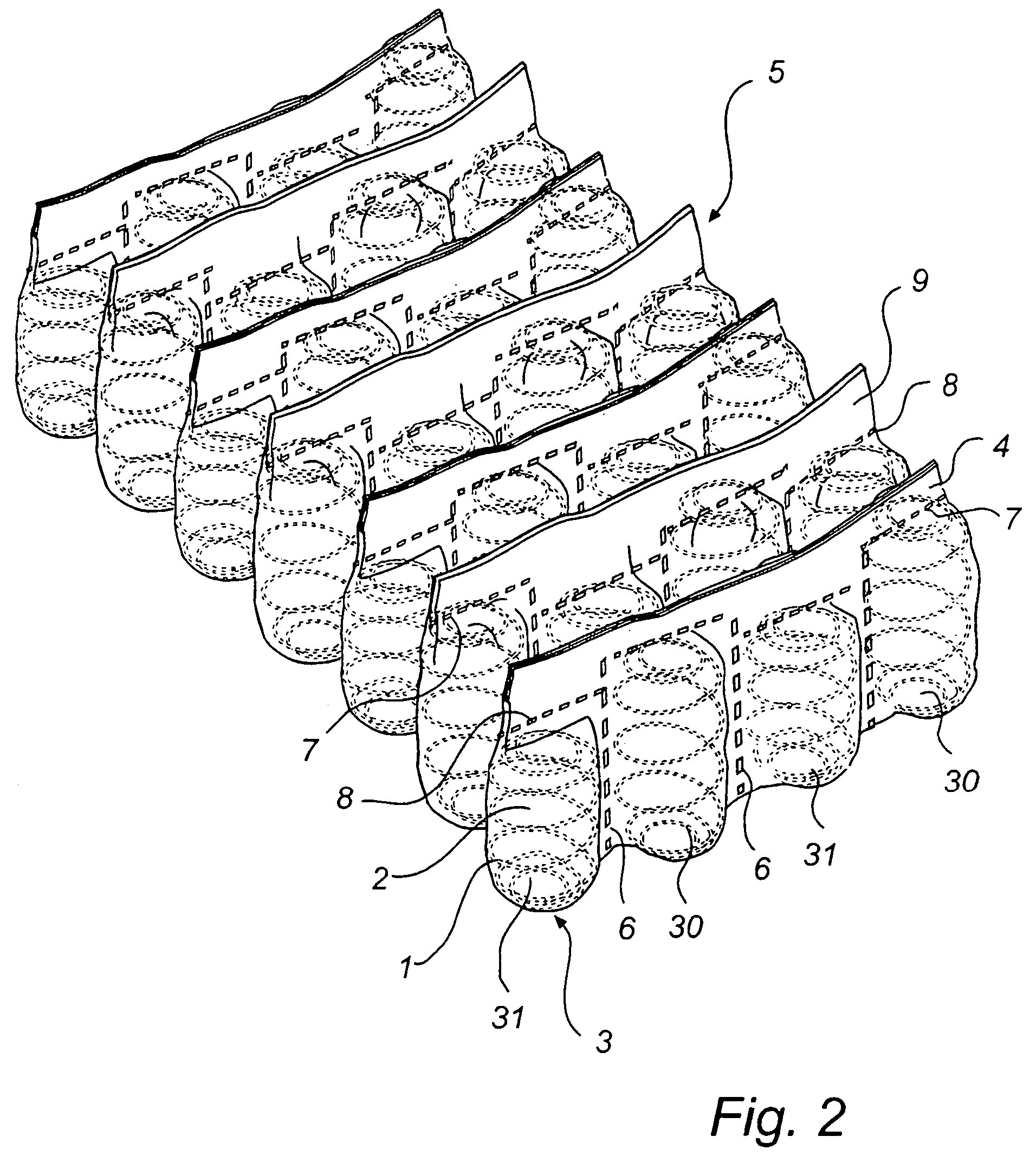Pocket mattress with varying height
a pocket mattress and height technology, applied in the field of spring mattresses, can solve the problems of relatively simple and cost-effective manufacturing of mattresses, and achieve the effects of flexible and efficient production, simple and cost-effective production equipment, and cost-effective production
- Summary
- Abstract
- Description
- Claims
- Application Information
AI Technical Summary
Benefits of technology
Problems solved by technology
Method used
Image
Examples
first embodiment
[0048]The spring units 30, 31 with different heights can advantageously be distributed over the surface of the mattress. In the first embodiment, shown in FIGS. 1, 3 and 5, the number of low spring units 31 is essentially the same as the number of high spring units 30, i.e. the ratio of the number of units in the group with the smallest number of units to the number of units in the group with the largest number of units is essentially 1. The spring units with a deviating height, i.e. the low spring units 31, are further arranged in a regular and repetitive pattern, where every second spring unit in the strings is high and every second is low. The strings are further offset relative to each other, so that also in a direction transversely of the longitudinal direction of the strings there are alternately high and low spring units. As a result, the spring units with the respective heights form diagonal lines across the surface of the mattress. This pattern is most clearly to be seen in...
second embodiment
[0049]In a second embodiment shown in FIG. 6, the number of low spring units 31 is essentially the same as the number of high spring units 30. The spring units are also in this case arranged in a regular and repetitive pattern, but here the spring units with the respective heights are arranged in pairs. Moreover the strings are offset relative to each other, but each string is offset by two spring positions.
[0050]Also in a second embodiment, shown in FIG. 7, the number of low spring units 31 is essentially the same as the number of high spring units 30. Also in this case, the spring units are arranged in a regular and repetitive pattern, but here the spring units with the respective heights are arranged in pairs. The strings are offset relative to each other so that also in a direction transversely of the longitudinal direction of the strings alternately high and low spring units are arranged in pairs. The spring units form groups of spring units with different heights, which togeth...
third embodiment
[0051]In a third embodiment, shown in FIG. 8, the number of low spring units 31 is essentially the same as the number of high spring units 30. The spring units are also in this case arranged in a regular and repetitive pattern, and the spring units with the respective heights are arranged in pairs within each string. The strings are further offset relative to each other so that also in a direction transversely of the longitudinal direction of the strings, alternately high and low spring units are arranged in pairs, but in contrast to the embodiment in FIG. 6, the displacement here corresponds to one spring unit only, not two. The spring units form diagonal zigzag lines across the surface of the mattress.
PUM
 Login to View More
Login to View More Abstract
Description
Claims
Application Information
 Login to View More
Login to View More - R&D
- Intellectual Property
- Life Sciences
- Materials
- Tech Scout
- Unparalleled Data Quality
- Higher Quality Content
- 60% Fewer Hallucinations
Browse by: Latest US Patents, China's latest patents, Technical Efficacy Thesaurus, Application Domain, Technology Topic, Popular Technical Reports.
© 2025 PatSnap. All rights reserved.Legal|Privacy policy|Modern Slavery Act Transparency Statement|Sitemap|About US| Contact US: help@patsnap.com



